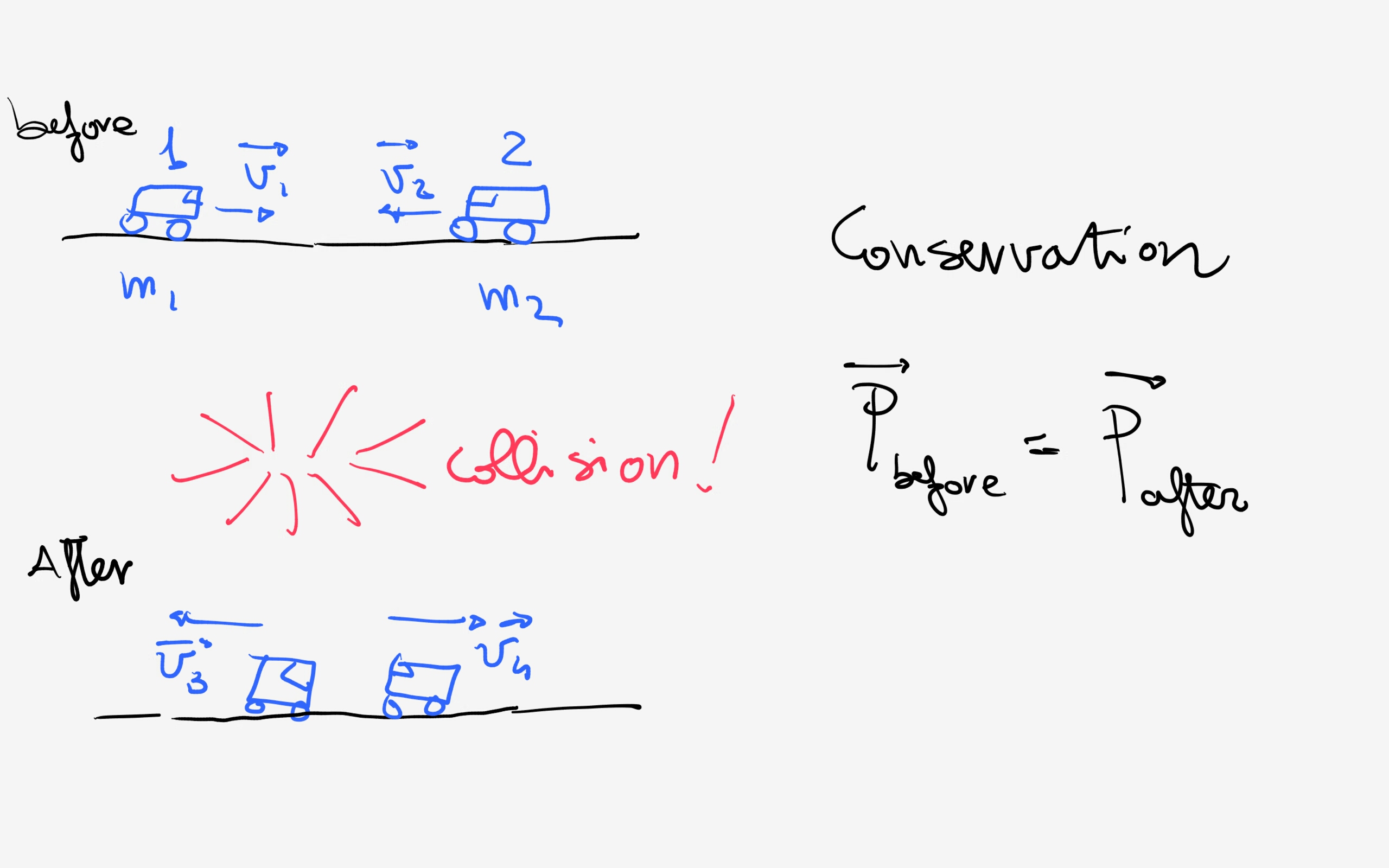Question #55a1a
1 Answer
I tried this...
Explanation:
Momentum is a vectorial quantity given as:
Although scary looking this expression is quite good and historically it was used by Newton to formulate his second law!
Newton says that force causes a change in momentum or:
Ok, this probably looks even scarier but it is our usual expression:
But, when we start to study Physics we do not know about differentials so we start from the end!
The really incredible thing about momentum is that is conserved. If you have a system where no external force is operating and mass is constant (no input or subtraction of mass) then the momentum does not change....!
Ok, it does not seem very useful but if your system undergoes an event (very difficult to analyse, for example) you can say that the momentum before will be equal to the momentum after the event!!!
A collision is one of such complicated events:
To try analyzing the dynamics of a collision is a tough task, instead you simply say:
that is our equation!
Consider a linear example along the

And write:
Using the right signs for the velocities (left=negative or right=positive).
Hope I didn't confuse you even more!

